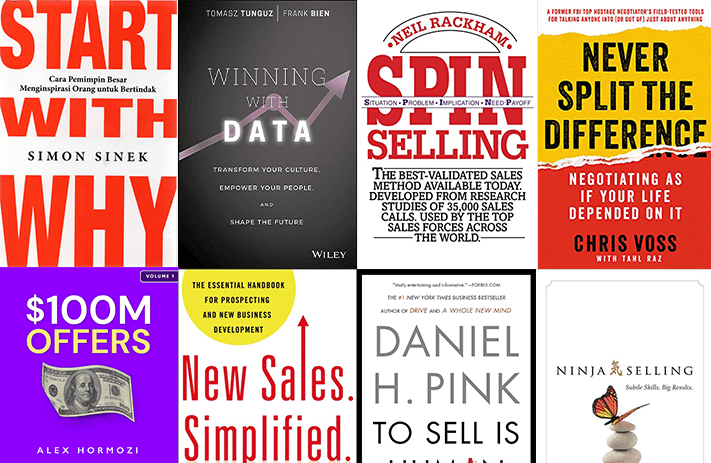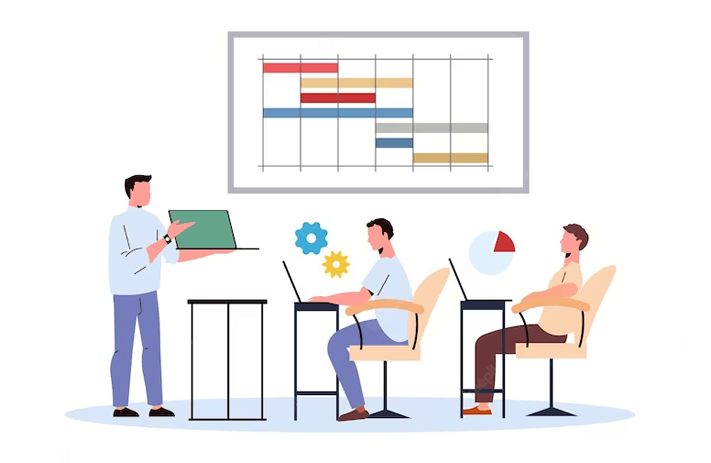
Click the button to start reading
Top 10 Project Management Software for Mac in 2023
Apple is known for being the hardware option where design meets functionality.
Mac users often find themselves at a crossroads when it comes to selecting the right software. The challenge?
Finding project management tools that are compatible with macOS and offer the features and experience Mac users have come to expect.
The marketplace is not short of software options, both installed and cloud-based. This abundance can lead to decision paralysis, wasted investments in incompatible tools, or settling for subpar features that don’t fully leverage Mac’s capabilities.
We understand the struggle, and that’s why we’ve taken the initiative to sift through the noise. In this guide, we’ll present you with the cream of the crop in project management software tailored for Mac users. You can expect:
- An exploration of the market’s leading tools.
- A breakdown of the strengths and weaknesses of each software so you know exactly what you’re signing up for.
- Essential pricing details, so you can find a tool that delivers value without breaking the bank.
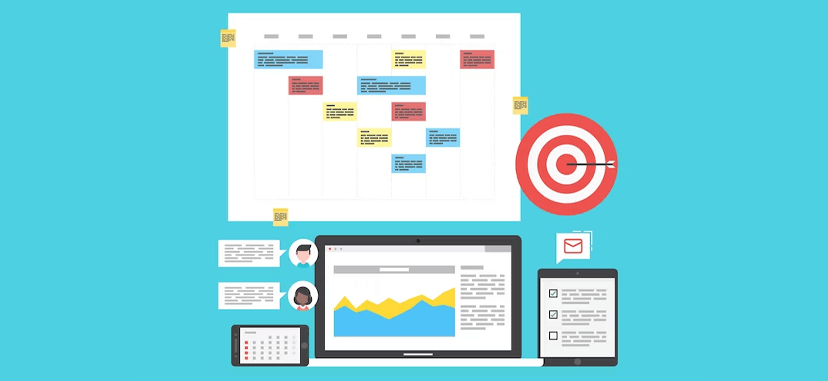
What You Should Look For In Mac Software for Project Management
The Apple ecosystem is known for its seamless integration, intuitive design, and high-performance capabilities.
So, when searching for the perfect project management tool, it’s only natural to seek out software that aligns with these Apple standards.
Here are the essential ingredients to look for:
- Seamless macOS Integration: The software should feel like it’s part of the Mac environment. Look for tools that offer native macOS applications, ensuring smooth performance, quick updates, and a user interface in harmony with the Apple aesthetic. Incorporating a macOS kernel extension can significantly enhance application performance, making it an essential consideration for developers aiming to fully utilize macOS capabilities.
- iCloud Syncing: In the Apple universe, iCloud is a game-changer, allowing real-time syncing across devices. A top-tier project management tool should leverage iCloud or offer similar cloud-based syncing capabilities, ensuring your project data is accessible whether you’re on your MacBook, iPad, or iPhone.
- Intuitive User Interface: Apple products are celebrated for their user-friendly interfaces. Your project management software should be no different. An intuitive design means less time learning the software and more time executing projects efficiently.
- Robust Security: Apple sets high standards for security. Ensure your chosen software prioritizes data protection, offers end-to-end encryption, and aligns with Apple’s stringent security protocols.
- Customizability: Just as macOS allows for a tailored user experience, your project management tool should offer customization options. Flexibility is key, whether it’s adjusting notifications, creating custom workflows, or integrating with other macOS apps.
- Scalability: As your projects grow in complexity or number, your software should be able to keep up. Ensure the tool is scalable, catering to both small projects and large-scale operations without compromising on performance.
- Affordability: While Apple products come with a premium price tag, that doesn’t mean your project management software should break the bank. Look for tools that balance features and cost well, ensuring you get value for your investment.
- Customer Support: Even the most intuitive software can present challenges. Opt for tools that offer easy access to customer support, preferably with knowledge of the Apple ecosystem, ensuring any issues are resolved swiftly.
- Regular Updates: Apple is known for its regular OS updates, introducing new features and improvements. Your project management software should be equally committed to evolution, offering regular updates that harness the latest macOS capabilities.
Focus on the ingredients listed above, and you’ll be well on your way to selecting software that meets and exceeds your project management needs while staying true to the Apple experience you love.
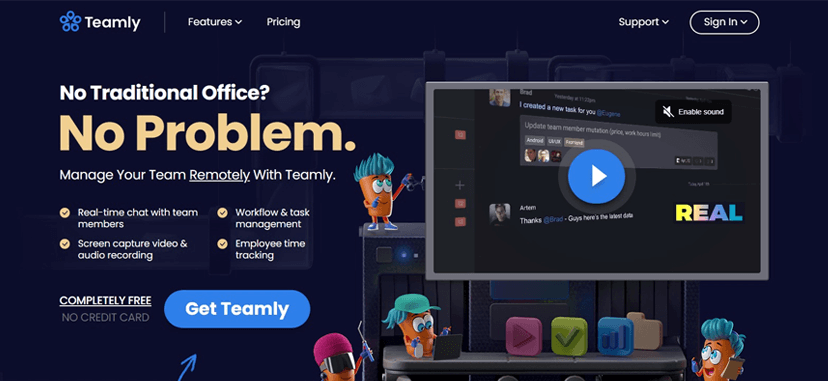
Teamly
Teamly is not just another project management tool; it’s a comprehensive solution tailored for remote teams using Mac or PC.
Born out of the need to streamline remote work, Teamly understands the intricacies of modern businesses. It’s not just about managing tasks; it’s about better collaboration, ensuring transparency across disparate team members, and driving productivity.
Teamly prioritizes simplicity for its users.
While many project management tools can overwhelm users with complex interfaces and redundant features, Teamly strikes a balance. It offers powerful functionalities without compromising on user experience. Its design is intuitive, ensuring that even those new to project management can quickly get on board.
One of the standout features of Teamly is its adaptability. Whether you’re a freelancer juggling multiple projects or a large corporation with intricate workflows, Teamly molds itself to fit your needs. Its flexibility ensures that as your business grows and evolves, Teamly remains a steadfast ally, adapting and scaling with you.
Pros and Cons of Teamly
Pros:
- User-Friendly Interface: Teamly’s design is ready out-of-the-box, so to speak, ensuring a smooth onboarding process for new users.
- Adaptable to Business Needs: Whether you’re a startup or a large enterprise, Teamly scales and adapts to your requirements.
- Enhanced Collaboration: Teamly promotes transparency and open communication, ensuring teams remain aligned.
- Templates: Teamly has put together a wide range of templates so any business can get up and running with the workflows they need without spending precious hours building from scratch.
- Cloud Based: Access from anywhere. Perfect for remote teams whose employees may use a mix of Mac and Windows.
- Security: With robust encryption and data protection measures, Teamly ensures your business data remains secure.
- Unlimited Users: Unlike other project management tools, Teamly doesn’t charge per seat. All tiers include unlimited users as standard.
- Generous Free Plan: Teamly’s free plan doesn’t restrict the number of users.
Cons:
The focus on remote teams might mean businesses looking for in-person collaboration tools need to integrate additional software.
Pricing Information
Teamly offers a variety of pricing plans to cater to different needs:
- Free Plan: $0/month
- Starter Plan: $47/month (Billed Monthly)
- Business Plan: $97/month (Billed Monthly)
Both paid tiers have a 14-day free trial, so there’s no risk to you when trying out the software to see if we’re a perfect fit.

Smartsheet
Smartsheet is a workspace designed for enterprise teams, compatible with both Mac and PC platforms.
With a focus on streamlining work processes, Smartsheet addresses the multifaceted needs of today’s biggest businesses. It goes beyond task management by offering tools that boost collaboration and clarify workflows.
Central to Smartsheet is its user interaction. Smartsheet presents a balanced user interface. It includes various features designed for industries like healthcare, financial services, and construction, emphasizing user-friendliness.
As with all tools, user experiences might differ, and what works for one might not for another. Since Smartsheet has been created for enterprises, smaller teams and one-person shops may find the software is too advanced for their needs.
However, for those businesses with enterprise-level growth, a distinguishing feature of Smartsheet is its adaptability.
The platform is designed to serve a wide range of business sizes and types, including government services. Its flexibility means it can adjust to different organizational structures and requirements.
Pros and Cons of Smartsheet
Pros:
- Templates: Smartsheet includes a range of templates your team can pick without creating workflows from scratch.
- Customization: Whether you build from scratch or choose a template, Smartsheet enables you to customize workflows to suit your needs.
- No-code Tools: Smartsheet incorporates no-code tools, so you don’t need the added expense of a developer to make sure everything works.
- Cloud Accessibility: The platform is accessible from various devices, suitable for mixed OS teams.
- Integration Options: Smartsheet provides integration capabilities with other tools and apps, including MS Teams, HubSpot, and DocuSign.
Cons:
- Feature Complexity: Some users might find certain features challenging to navigate or understand.
- User-Based Pricing: The pricing model is contingent on the number of users, which might not be cost-effective for larger teams.
Pricing Information
Smartsheet’s pricing structure is as follows:
- Free Plan: $0 cost.
- Pro Plan: $9/user/month (Billed Monthly). Maximum 10 users.
- Business Plan: $32/user/month (Billed Annually). Minimum 3 users.
- Enterprise Plan: Pricing varies based on specific organizational needs.
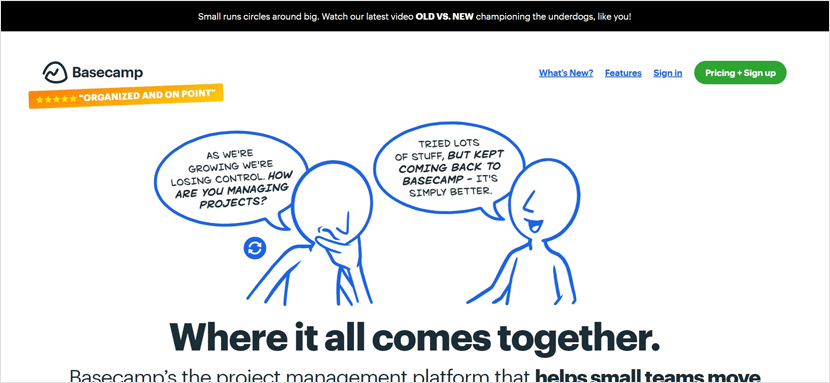
Basecamp
Basecamp has carved a niche for itself as a reliable project management solution compatible with both Mac and PC platforms.
Designed with a mission to centralize and simplify team collaboration, Basecamp offers a holistic approach to managing projects and tasks. It’s not just about assigning to-dos; it’s about creating a unified workspace where teams can communicate, share, and progress together.
While the world of project management tools can be a maze of features and functionalities, Basecamp chooses a different path. Its design is a clutter-free environment where the focus is on getting things done rather than being able to view all items at all times. The platform is less complex than other tools, so project management novices or veterans can navigate with ease.
It’s structured to accommodate the diverse requirements of various businesses, from freelancers to multinational corporations. The platform’s design ensures that it remains a consistent and reliable tool, regardless of the scale or complexity of the projects it manages.
Pros and Cons of Basecamp
Pros:
- Two Plans: Basecamp offers two plans, one for individuals and small teams, a monthly per-user cost, or an unlimited-user plan for an annual fee.
- Mobile app: Access the software from anywhere with Basecamps mobile app, ensuring you’ll always have complete access to your workflows.
- Generous storage: Both plans come with generous amounts of storage for documents and media.
- Cloud-Based: Ensures accessibility across devices, making it ideal for teams using both Mac and PC.
- Integrations Available: Where Basecamp falls short of features, it makes up for it with integrations to fill any gap, including Zapier, Field Trip, and Zoho Flow. However, these may include additional costs.
Cons:
- No Time-Tracking: Basecamp doesn’t have native time-tracking, which can be an important feature for remote and hybrid teams or those using contractors.
- Limited Advanced Features: While it covers the basics, it might lack some advanced features offered by specialized tools.
Pricing Information
Basecamp’s pricing is straightforward:
- Basecamp: $15/user/month (billed monthly, no annual option)
- Basecamp Pro Unlimited: $299/annual, flat rate regardless of the number of users.
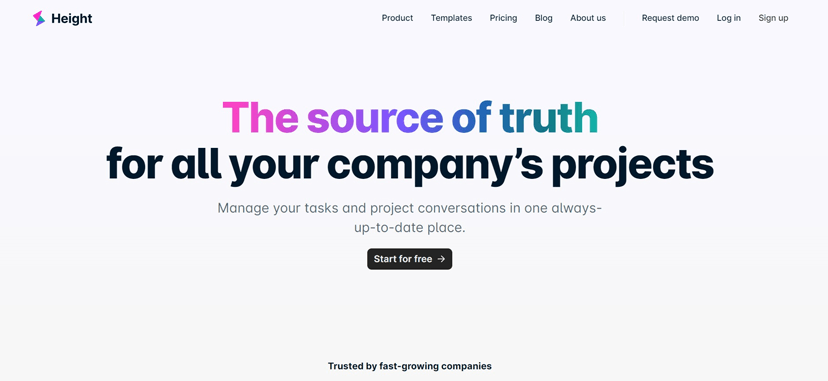
Height
Height’s platform wants to help teams to bring their project conversation into one place so everyone is working with all the up-to-date information they need.
Intending to make team collaboration easier and streamline their workflows, Height is a place where teams can manage tasks, communicate, and automate processes. It’s not just about ticking off tasks; it’s about creating an environment where teams can work cohesively and efficiently.
Height focuses on delivering a balanced experience for cross-functional teams. It combines traditional task management with AI-enhanced capabilities, ensuring users have the necessary tools without feeling overwhelmed. The platform’s design is simple and clean, making onboarding teams easier than the more complex PM tools available.
Pros and Cons of Height
Pros:
- User Interface: Height boasts a clean and intuitive interface, making task management straightforward.
- AI-Enhanced Features: The inclusion of AI, like the Copilot feature, sets it apart, offering unique functionalities like preventing duplicate tasks and auto-generating standups.
- Custom Automation: Allows teams to set up intelligent workflows tailored to their needs.
- Integration Capabilities: Seamless integration with tools like Slack, GitHub, and Figma enhances its utility.
Cons:
- Learning Curve: With its unique AI features and custom automation, some users might need time to fully understand and utilize all its capabilities.
- Pricing Model: The pricing is based on the number of members, which might not be ideal for very large teams or organizations.
Pricing Information
Height’s pricing structure is as follows:
- Free Plan: $0 (free for everyone).
- Team Plan: $8.50 per member/month (billed monthly).
- Business Plan: $14.99 per member/month (billed monthly).
- Enterprise Plan: Custom pricing tailored for organizations with 1000+ members.

Trello
Trello is a visual Kanban tool that creates a shared perspective for your team on any project.
Trello’s boards, lists, and cards enable you to organize and prioritize your projects in a flexible way. It’s about providing a visual platform where teams can see the bigger picture, track progress, and collaborate in real time.
For project managers, Trello stands out with its simple card-based system. This system is both easy to navigate and use, ensuring that users, regardless of their experience level, can adapt and make the most out of the platform.
Unlike many of its competitors, Trello is a simple project management tool with little fuss. It’s a good option for individuals managing personal tasks and large corporations coordinating complex projects which don’t need a long list of additional features. Its adaptability ensures that it remains a consistent and reliable tool, irrespective of the size or nature of the tasks it oversees.
Pros and Cons of Trello
Pros:
- Visual Interface: Trello’s card-based system provides a clear visual representation of tasks and progress.
- Drag-and-drop system: Trello doesn’t need a degree-educated developer to use. It’s built on a simple drag-and-drop interface, so anyone can use the software regardless of tech skills.
- Integration Capabilities: Trello offers a range of Power-Ups, allowing users to integrate their favorite tools and enhance functionality, including Slack, Jira, and Confluence.
- Mobile Accessibility: Trello provides iOS and Android mobile apps, ensuring users can manage tasks on the go.
- Almost No Learning Curve: The software is ready to use out-of-the-box and doesn’t require any specialist knowledge.
Cons:
- Scalability: While Trello is great for small to medium-sized projects, it might become challenging to manage for huge projects.
- Advanced Features: Some advanced project management features might require third-party integrations or premium plans.
Pricing Information
- Free: $0 for the whole team.
- Standard: $56 per user/month (Billed Monthly).
- Premium: $12.50 per user/month (Billed Monthly).
- Enterprise: $17.50 per user/month (Billed annually).
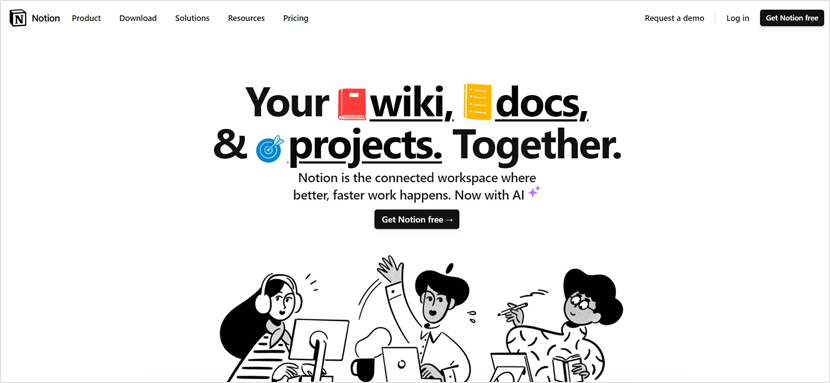
Notion
Notion is an all-in-one workspace tool that works from an app or on the web for both Mac and PC.
With the goal of redefining how teams work together, Notion combines notes, tasks, wikis, and databases into a single platform. It may start with jotting down ideas or assigning tasks but can become a centralized space where teams can document, collaborate, and build together.
Notion uses a modular approach to building workspaces. Users can customize their workspace by piecing together different “blocks” based on their needs. This flexibility ensures that the platform remains relevant, whether you’re drafting content, building a knowledge base, or managing tasks.
Notion can be a complicated beast to master, depending on your needs. The freedom it offers to create workspaces is overwhelming, and there is a learning curve to overcome for more advanced features. With that said, Notion is adaptable and a good tool for personal and business needs.
Pros and Cons of Notion
Pros:
- Modular Design: Notion’s “block” system allows users to customize their workspace based on specific needs.
- All-in-One Platform: Combines notes, tasks, wikis, and databases, reducing the need for multiple tools.
- Templates: Offers a variety of templates for different use cases, aiding in quick setup. There is also a bustling Notion marketplace where users can sell the workspaces they’ve designed.
- Integration Capabilities: Notion can integrate with various other tools, including Box, Canva, and Slack.
- AI Writer: Notion includes an AI writer for an additional cost that can help streamline some elements of your work.
Cons:
- Learning the Tool: Notion does a lot, and it shows. Although anyone can get started with tools regardless of skill level, creating databases and workflows is a time commitment, and the native tutorials feel somewhat lacking. However, there are plenty of Notion experts on YouTube and the web.
- Mobile Experience: While functional, the mobile app experience might not be as smooth as the desktop version.
Pricing Information
- Free Plan: $0 (free for everyone).
- Plus Plan: $10/user/month (Billed Monthly).
- Business Plan: $15/user/month (Billed Monthly).
- Enterprise Plan: Custom pricing for large teams or organizations.
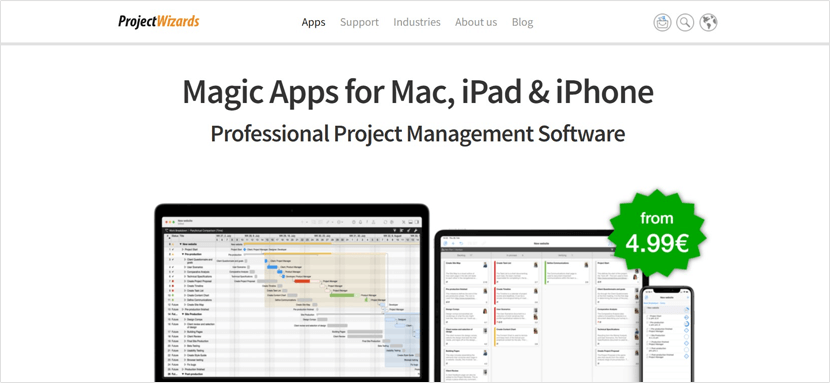
Merlin Project
Merlin Project is a project management software specifically tailored for Mac users.
Born out of the need to provide Mac and iOS users with a professional-grade project management tool, Merlin Project emphasizes precision and detail. It’s a total solution for Apple users that caters to every facet of project management, from resource allocation to cost tracking.
Merlin Project aims to simplify this journey for Mac users as one of the only tools dedicated to Apple products. With a focus on providing a seamless user experience, the software has been used by businesses ranging from music and entertainment to agriculture and construction. The interface is designed with clarity in mind, ensuring that newcomers and seasoned project managers can efficiently utilize its capabilities.
Pros and Cons of Merlin Project
Pros:
- Mac-Centric Design: Tailored for Mac users, ensuring optimal performance and integration.
- Detailed Project Insights: Offers tools like Gantt charts, resource allocation, and cost tracking.
- iOS Version: As an Apple-specific tool, users can access Merlin Project on the go using their iPhone or iPad.
- Integration Options: Integrates with all the Apple-designed apps you would expect, including iCloud, Apple Mail, and Apple Calendar. Merlin Project also integrates with many third-party apps like Evernote and Microsoft Outlook.
Cons:
- Platform Limitation: Designed for Mac, there is no Windows or Cloud-based version.
Pricing Information
- Merlin Project Express: $3.99/user/month (Billed Monthly).
- Merlin Project for Mac: $16.99/user/month (Billed Monthly).
- Merlin Project for iPad: $9.99/user/month (Billed Monthly). Includes the iPhone version.
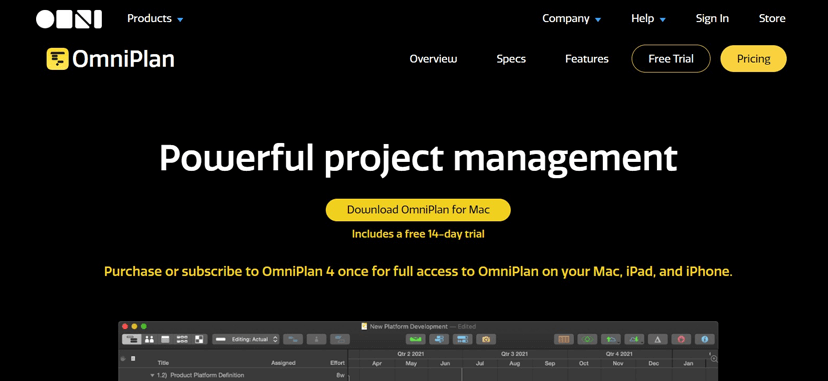
OmniPlan
OmniPlan is another project management tool designed specifically for Mac and Apple users.
To offer a detailed and structured approach to project planning and execution, OmniPlan works for both simple and complex projects. It provides an environment where project timelines, resource allocations, and cost estimations come together seamlessly.
The software has features like Gantt charts and network diagrams, ensuring users can visualize every aspect of their project. The interface, while detailed, is designed to be user-friendly, catering to both those new to project management and seasoned professionals.
Pros and Cons of OmniPlan
Pros:
- Detailed Visualization: OmniPlan’s Gantt charts and network diagrams visually represent project timelines and dependencies.
- Monthly or One-Off Pricing: OmniPlan can be bought as a subscription paid monthly, or users can purchase a one-off lifetime license.
- Familiar Interface: If you use tools from The Omni Group, like OmniFocus or OmniOutliner, the tools will feature a familiar design that makes learning easier.
- Monte Carlo Simulations: Use algorithms to predict the probability of outcomes within OmniPlan.
Cons:
- Restricted Features: Some features are only available for the Mac software, meaning users who primarily use the iPad or iOS versions can only access some of its features.
- No Cloud Application: OmniPlan is available exclusively for Apple users, meaning teams who use Windows or other operating systems won’t be able to access the tool.
- Legacy Support: OmniPlan is compatible with MacOS 11 onwards; anyone using older operating systems will be locked out.
Pricing Information
All OmniPlan tiers give access to the software’s Mac, iPad, and iPhone versions.
- OmniPlan Subscription: $19.99/user/month (Billed Monthly)
- OmniPlan v4 Standard Licence: $199.99/user (One-time purchase).
- OmniPlan v4 Pro Licence: $399.99/user (One-time purchase).
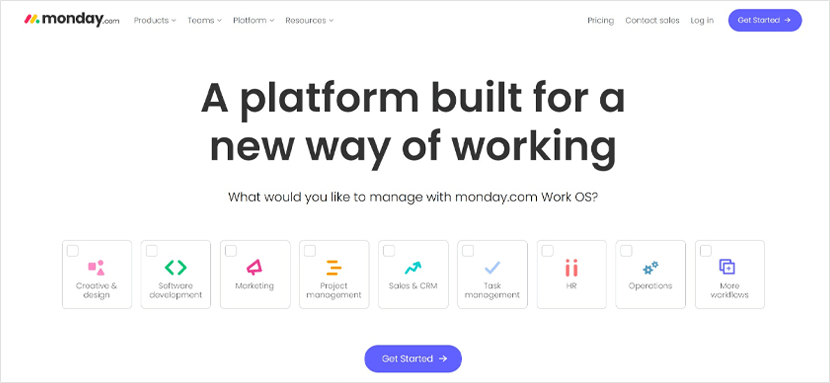
Monday.com
Monday.com has established itself as a work operating system suitable for Mac and PC users.
It offers a platform where teams can plan, execute, and track their work in one centralized place, improving collaboration and transparency.
Monday.com includes customizable workflows and visually appealing boards. The software is designed to be adaptable, allowing users to mold it according to their specific needs. Its colorful and interactive interface is both engaging and user-friendly, and they provide plenty of templates for users to plug in and go.
Monday.com works best for small to medium-sized businesses; larger enterprises may outgrow the platform. However, the templates provided make monday.com a good option for many industries, including sales teams, HR, and product development.
Pros and Cons of Monday.com
Pros:
- Customizable Workflows: Monday.com offers a high degree of customization, allowing teams to set up workflows that match their processes.
- Visual Project Tracking: The platform’s boards and charts visually represent project progress and team activities.
- Integration Capabilities: Supports integration with various third-party apps and tools, including GitHub, Zoom, and HubSpot.
- Automation Features: Allows users to automate repetitive tasks, freeing up team members for higher quality work.
Cons:
- Pricing Model: The pricing is based on the number of seats, which might become expensive for larger teams.
- Guest Access Restrictions: Lower tiers don’t allow guest access, and the standard tier requires additional payment for outside users, which can affect collaboration.
Pricing Information
Below is the pricing information for monday.com
- Free Plan: $0 for up to 2 users.
- Basic Plan: $10/seat/month (Billed Monthly).
- Standard Plan: Starting at $12/seat/month (Billed Monthly).
- Pro Plan: Starting at $20/seat/month (Billed Monthly).
- Enterprise Plan: Custom pricing based on specific organizational needs.
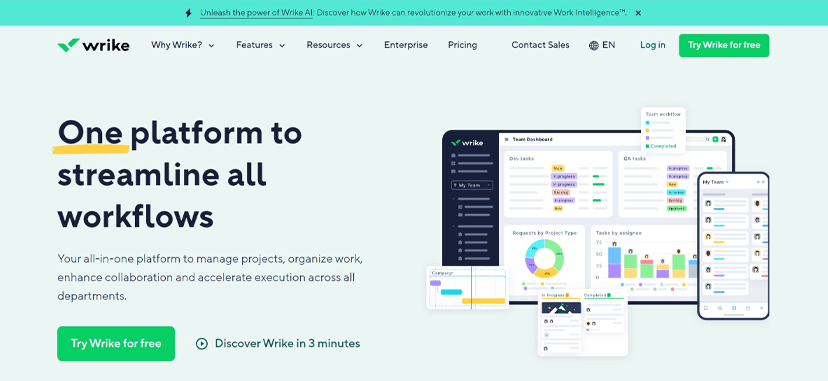
Wrike
Wrike provides a centralized workspace where teams can plan, collaborate, and achieve results. It’s a place to manage everything from individual tasks to team workflows and the project happening in between.
Wrike includes a mobile app that can be a boon for teams traveling outside the office. And with enterprise-level security for every user, you can rest assured that your business secrets are kept safe from outside forces.
Pros and Cons of Wrike
Pros:
- Automation and Sequencing: Free up time and resources using Wrikes automation and sequential workflows.
- Custom Templates: Wrike offers workflow templates that can be customized to match your needs.
- Integration Capabilities: Seamless integration with popular apps, including Slack, Microsoft Teams, and Salesforce.
- Scalability: Suitable for both small teams and large enterprises, adapting to growing business needs.
Cons:
- Low Storage: Wrike’s storage per user is on the lower side. Team members may find they hit their limit quickly, requiring deleting older documents from the servers.
- No Chat Feature: While there is the ability to comment on tasks, the lack of native chat means businesses must pay for a third-party communication tool that can slow down collaboration.
Pricing Information
Here are the five plans offered by Wrike:
- Free Plan: $0 for unlimited users.
- Team Plan: $9.80/user/month (Billed Monthly) for 2-25 users.
- Business Plan: $24.80/user/month (Billed Monthly) for 5-200 users.
- Enterprise Plan: Custom pricing is available for those with enterprise needs.
- Pinnacle Plan: Custom pricing for Wrike’s highest tier, suitable for large enterprises.
Try Teamly On Mac for Free Today
Teamly is available on Mac and PC, so no matter what hardware your team uses, they’ll be able to connect and collaborate through us.
All plans come with unlimited users as standard, whatever the size of your operation, from solopreneurs to large businesses. Your whole team can be onboarded at no extra costs, including our free plan.
Try us today by taking advantage of our free plan or signing up for a 14-day free trial for our paid options.





